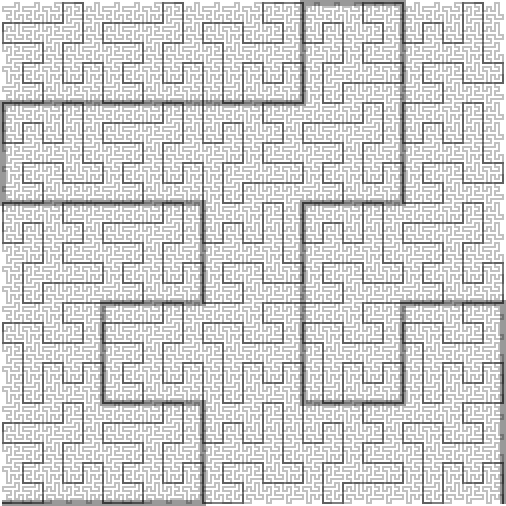E curve
The E curve belongs to the group of so-called FASS-curve (space- f illing, self- a voiding, s imple, self- s imilar). These curves are space-filling, self-evading (i.e. free of overlap and contact), simple and self-similar.
By repeating its construction process, in which each individual segment of the line is replaced by a scaled-down image of the entire line, the E-curve comes as close as desired to any point on a square surface without intersecting itself after a sufficient number of construction steps. The limit of this infinite series of self-similar curves completely fills the area.
Explanation of the construction process
An E-curve of the level is inscribed on a square:
In order to be able to show more easily how the individual segments of the line will be replaced, the following pattern is used, in which on the one hand a distinction is made between light and dark partial squares and on the other hand the orientation of the squares (see marking) must be observed:
As a result, the dark squares are replaced by the same pattern (note the orientation!)
... and the bright squares through the negative image of the pattern (note the orientation!).
After this step, an E-curve of level n = 2 is obtained:
If you apply this again, you get an E-curve of level n = 3:
By continuing to use this procedure, E-curves of any level can be obtained.
The representation of the levels n = 1, 2, 3 in a common picture:







